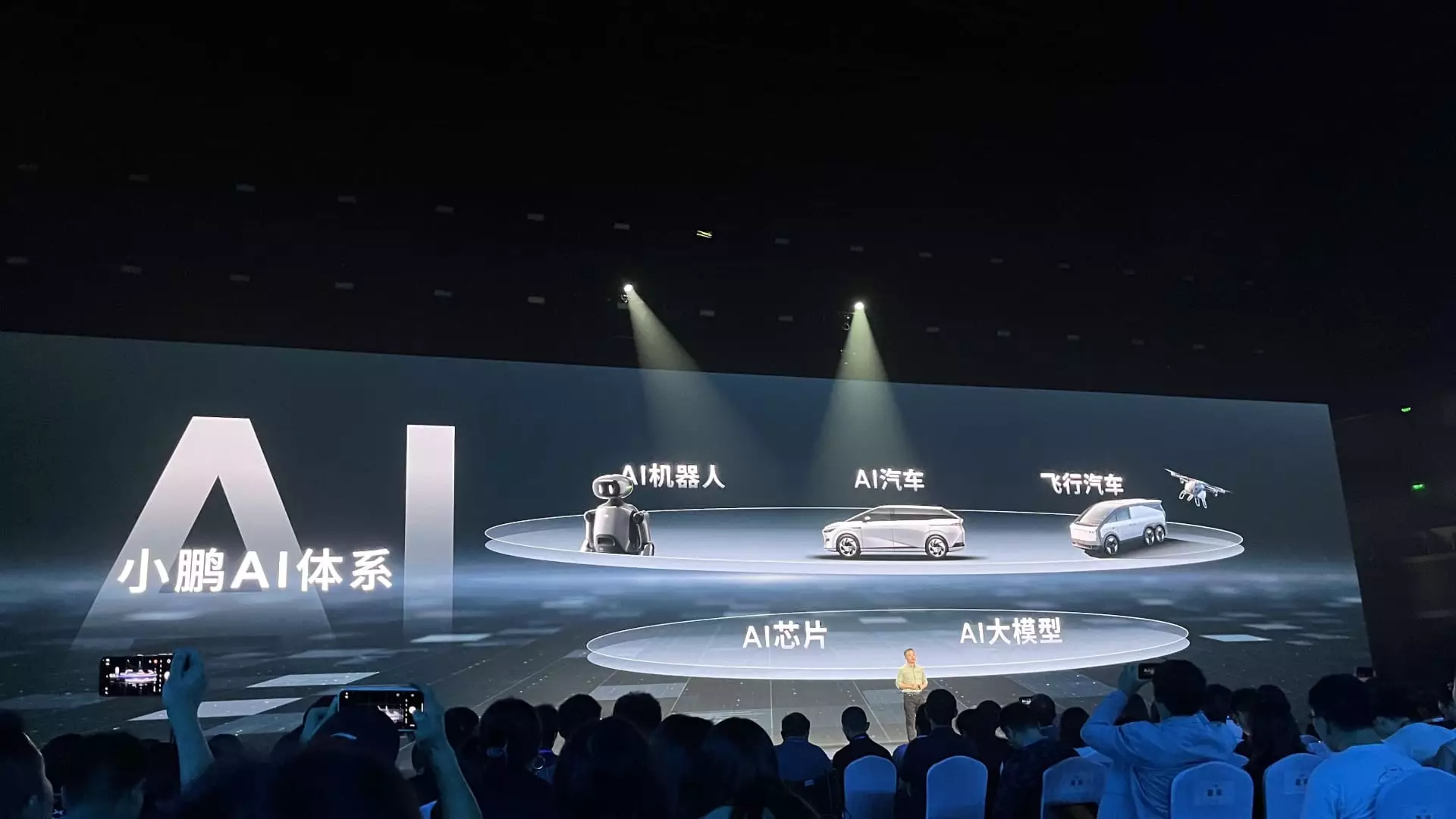The electric vehicle (EV) market in China is witnessing a seismic shift, fueled by technological advancements and intense competition. Among the companies leading this transformative wave is Xpeng, a startup that has strategically positioned itself as a formidable player in the EV landscape. With over 30,000 cars sold in just one month, it’s clear that Xpeng is no longer flying under the radar; it’s delivering results that could reshape consumer expectations and industry standards. The firm’s leap in sales underscores not only the effectiveness of its vehicle lineup but also its ability to leverage driver-assist technology, a critical differentiator in a sea of competition.
Xpeng has spent years honing its driver-assistance capabilities, which are becoming increasingly pivotal in the Chinese market. Unlike others that offer these features as add-ons, Xpeng has integrated advanced driver-assist software into its vehicles as a standard benefit. This shift is not just a marketing gimmick; it positions Xpeng as a company that prioritizes safety and convenience, factors that resonate deeply with today’s consumers who are more discerning than ever. The strategic timing of tapping into the lower-priced Mona M03 and Xpeng’s own P7+ model shows that the company understands the market’s pulse, aligning quality with affordability to maximize reach.
Analysts’ Optimism Amid Market Challenges
Industry analysts are buzzing with optimism regarding Xpeng’s trajectory. Bank of America recently raised its price target for Xpeng shares, illustrating a bullish sentiment about the company’s future. The notion that the company can sustain growth and profitability, particularly through 2025 and 2026, is truly commendable. However, one must tread carefully amidst the euphoria—market dynamics can shift rapidly, especially in a competitive arena where established giants and nimble startups constantly vie for consumer attention.
Analysts at Barclays, while acknowledging Xpeng’s turnaround, sound a note of caution. Despite an impressive product pipeline, they warn that customer acceptance is a multifaceted challenge that hinges on numerous variables. The premise that technological advancement guarantees market success is an oversimplification, especially when newer entrants like BYD are integrating faster charging technologies and autonomous features. The market’s turning point does not just represent a win for Xpeng, but a bellwether for broader industry trends that could redefine how consumers value features beyond just price and performance.
Autonomous Driving: A New Competitive Battlefield
A significant development in this unfolding drama is the intensifying focus on autonomous driving capabilities. The distinction between Level 2 (L2) and Level 3 (L3) autonomy is becoming more pronounced, making it essential for manufacturers to deliver on these expectations or risk being left behind. As companies like BYD roll out advanced driver-assist systems, Xpeng’s proactive embrace of these technologies represents not only foresight but a potential blueprint for success.
Shay Natarajan of Mobility Impact Partners highlights that the Chinese market is nearing a tipping point in autonomous driving technology. The competitive landscape suggests a potential paradigm shift: firms that fail to offer at least basic L2 features may find it increasingly difficult to maintain market share. Given Tesla’s current lower positioning in this regard, it’s intriguing to contemplate how they will adapt—whether they’ll follow suit or attempt to differentiate in other aspects. Xpeng’s proven commitment to driver-assist technologies places it ahead of the curve, as it prepares to release their “Max” version of the M03 with enhanced navigation capabilities.
A Cautionary Note on the Road Ahead
Despite the optimism surrounding Xpeng, it’s crucial to temper expectations with a healthy dose of skepticism. J.P. Morgan’s recent forecast revisions indicate a need for caution; while they acknowledge increased sales volumes, they also highlight the impact of rising research and development expenses. The financial landscape is delicate, and companies must navigate it artfully to maintain both innovation and profitability. Investors should watch closely as market conditions evolve, weighing the momentum gained against the backdrop of escalating costs and competitive responses.
In sum, Xpeng captures a compelling narrative of growth powered by technology, consumer understanding, and market timing. However, the challenges ahead reflect the complexities of the automotive landscape in China. The road may be long and fraught with obstacles, but if Xpeng continues to adapt and innovate, it stands poised to lead in an industry that is increasingly reliant on cutting-edge technology and consumer-driven value. The stakes are high, and the race is on.

